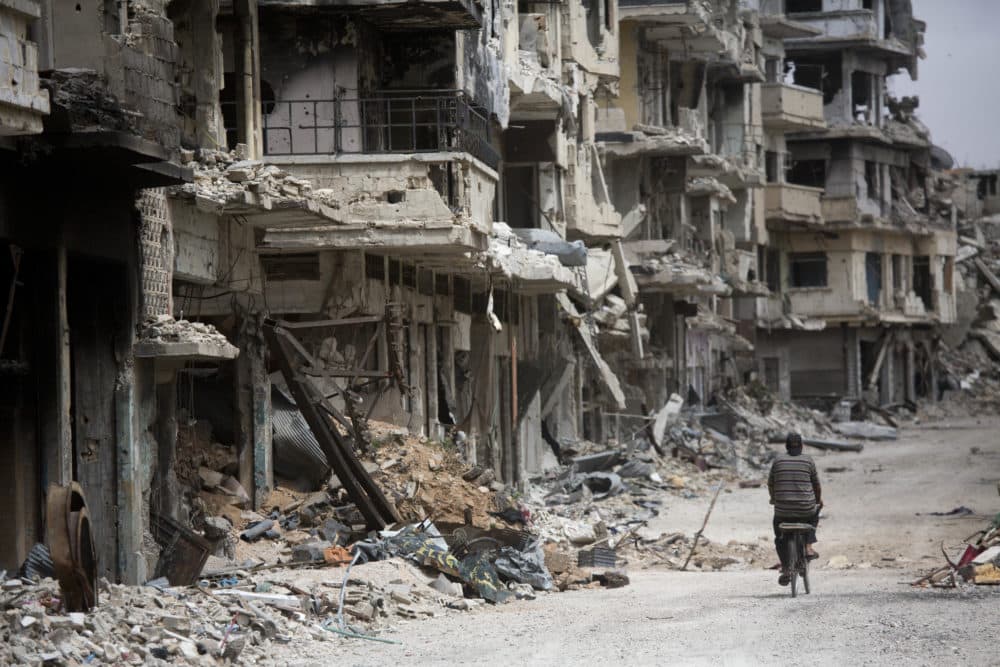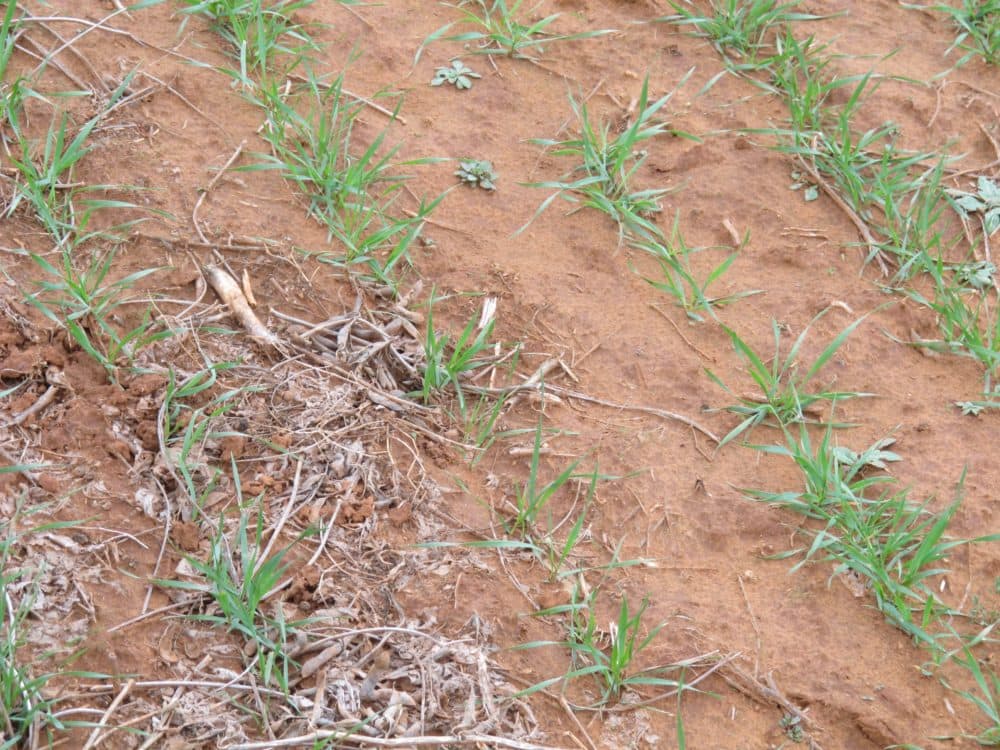Advertisement
commentary
The Scariest Thing About Climate Change: What Happens To Our Food Supply

What are the images that you associate with climate change? Are they scenes of wildfires or the devastation wrought by a monster hurricane? The thunderous crash of a glacier calving into the sea? Maybe what comes to mind are floodwaters coursing through city streets, or perhaps this classic: a forlorn polar bear atop a shrinking ice floe.
All of the above are real dangers. But global warming poses another peril harder to visualize, more insidious and, ultimately, more threatening to the stability of human societies. The impact of climate change on the ecosystems that support our ability to grow food should concern us most.
Floods, wildfires, superstorms and sea-level rise driven by climate change will continue to degrade the physical infrastructure of human civilization. And out of necessity, societies will respond by diverting enormous amounts of capital that would otherwise be invested or allocated to the consumption of goods and services. Climate change exacts a tax on our quality of life, a reckoning of the costs hidden in our fossil-fueled lifestyles.

But it’s food that is paramount. If you ask a historian why civilizations collapse, one cause will definitely be peoples' inability to feed themselves.
In the Late Bronze Age (between c. 1200 and 1150 BCE), famine was a primary component in the simultaneous fall of several Mediterranean civilizations, among them the Mycenaeans in Greece, the Hittites in Anatolia and the Kassite Dynasty of Babylonia. Analysis of pollen in sediment core samples reveals a protracted period of drought throughout the region, which would have led to disastrous crop failures and, in turn, to forced migration and war.
Roughly 2,000 years after that, the Anasazi civilization in the American Southwest experienced a similar collapse. These maize-growing people were also victims of climate change. Pollen and tree ring studies suggest that the social disintegration that occurred in the late 13th century was the result of an extended period of arid and cool conditions that made it impossible to feed a swollen population.
And in this century, the cataclysmic conflict in Syria followed a five-year drought (2006–2011) that thwarted efforts to raise livestock and irrigate crops. Starving people left their homes, and civil war broke out in a theater beset with complicated ethnic and political strife.

When people don’t have enough to eat, things unravel. History has repeatedly shown that when changes in climate cause food to become scarce, it severely tests the ability of a society to function. Today, the prospect of climate change caused by humans threatens agriculture on a global scale by debasing the planet’s ecosystems.
The value of ecosystems to humanity is well understood but not widely appreciated. Wetlands act as filter systems for water, provide habitat for fish and wildlife, mitigate flooding, and prevent erosion from storms. Forests provide timber and sequester vast amounts of carbon. The harvest of fish, from inland fisheries and oceans alike, is crucial to the world’s food supply. Land-based agriculture depends on natural water cycles, pollination by insects and support from rich microbial life in the soil. Human interconnectedness to other life on Earth is the fundamental truth of our ecological existence.
The warming climate of the 21st century puts new stresses on ecosystems that were already feeling the effects of overfishing, pesticides, intensive agriculture, industrial pollution and a growing human population. With climate change, species must now adapt to higher temperatures, acidification, new pests and pathogens, extreme weather and changes in the length of seasonal cycles. Inevitably, species will fail, biodiversity will continue to plummet and the delicate interactions and feedback loops that keep ecosystems functioning will break down.

Agriculture is both a casualty and a cause of climate change. Worldwide, about 13% of greenhouse gas emissions come from food production, and that doesn’t include deforestation to create new arable land or the emissions incurred in the transport of food. Rising incomes in the developing world are raising demand for meat, which will cause emissions to increase further. Intensifying the use of pesticides and petroleum-based fertilizer improves yields in the short term to meet the needs of an expanding population, but this is just not sustainable.
Paradoxically, agriculture is a significant contributor to the destruction of the ecosystems that undergird it. If the world is to avoid mass famine in the latter half of this century, holistic agricultural reform must happen in parallel with the decarbonization of the rest of the economy. Governments around the world will have to prioritize the adoption of sustainable agriculture and fishing, as well as the reduction of carbon emissions because the need for adequate food is a vulnerability that no civilization can evade.
The most terrifying image of climate change is not ocean waves crashing over a seawall. It is of a sun-baked field of wheat, parched and abandoned, its blighted soil drained of life.
